How to Putt: Disc Golf Putting Techniques
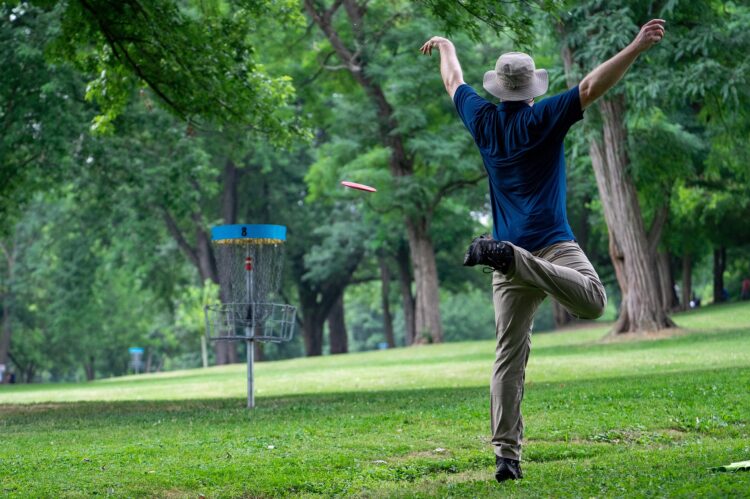
Unless you get an ace or a throw-in from the fairway, you’re going to putt on nearly every hole. Sometimes those putts are drop ins from a few feet away. Other times you have to work for them by letting the disc fly from great distances. How you choose to putt is up to you, but in this blog we will discuss different disc golf putting techniques and styles that disc golfer use to get the disc to the basket.
Although we will list a lot of techniques that are used in the disc golf world, we are going to focus on two different stances, and two different putting styles. These represent a bulk of the putts that you will see on any given day, and are tried and true techniques. Let’s start with some putting techniques that are a tad more unorthodox. Some of these unusual styles are used out of desperation or because you are in a situation with few choices, rather than using them on a regular basis.
Disc Golf Putting Techniques
TURBO PUTT

The turbo putt is commonly called a pizza putt. It is accomplished by holding the disc flat with your thumb under the putter and your fingers around the outer rim. The motion is made by pushing the disc forward, then adding a ton of spin by snapping your wrist. That motion, when mastered, can give the disc enough spin to hit long putts.
Although the turbo can create a lot of spin, it is usually used for shorter putts on an elevated basket, or putting over a obstacles such as low bushes. It is fun to watch a good Turbo putter, but the technique is usually reserved for close putts or out of necessity.
BASKETBALL PUTT
This novelty putt sort of mimics a shot with a basketball. It is accomplished by holding the disc upside-down at an angle, then flicking your wrist like shooting a basketball. That motion gives the discs some spin and it flies in an arc to the basket. Although I have never seen this putt used, there is video of a few pros (like Ricky Wysocki) use that technique.
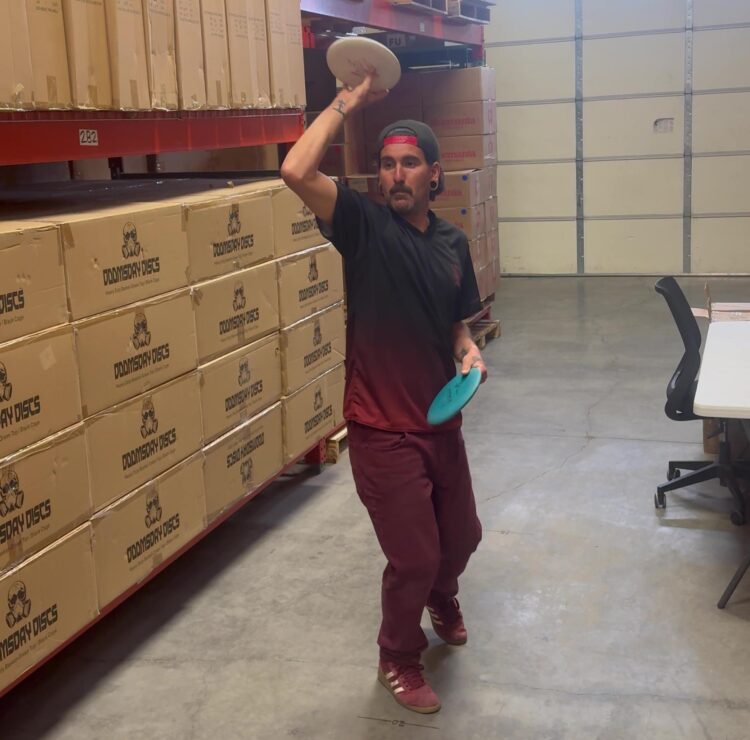
Another variation of this shot is to flip the disc so it doesn’t spin, but rather rotates slowly, then hits the chains on the full flight plate or bottom. Jennifer Allen has used this technique for short putts, usually on elevated baskets.
SCOOBER
Seen in tournament videos of Brodie Smith, the scoober is a method of throwing Ultimate discs in order to avoid defenders and progress downfield. It is thrown with the disc upside down and at an angle, so the disc will float toward the basket. It is just a short motion with the elbow and a flick of the wrist in a sort of reverse-forehand action. One of the great things about this putt is that the disc drops out of the sky, so if you miss, you won’t have a long comeback putt. Brody posted an instructional video on YouTube HERE
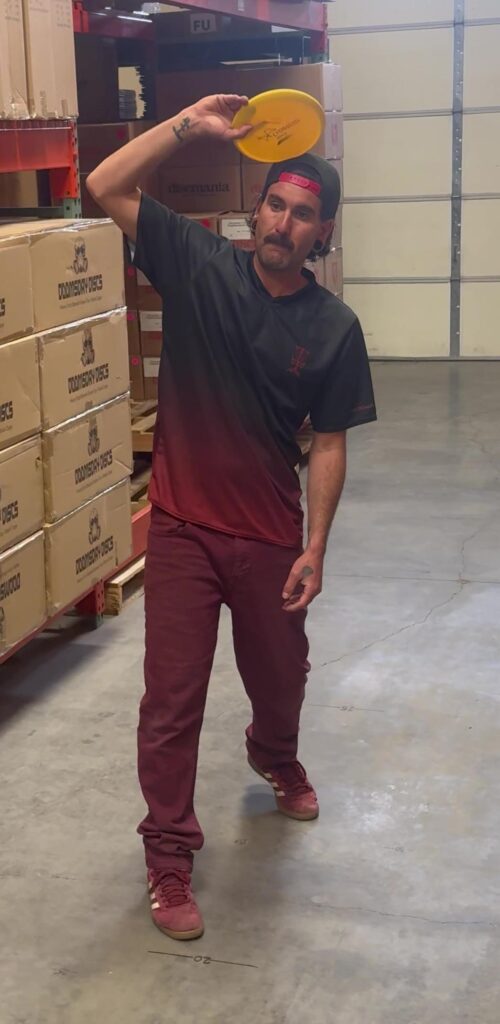
Although the scoober could be used in a situation where you have an obstruction that you need to get around or over, most people lack the skill to pull it off. Unless you practice that putt, or have a lot of Ultimate experience, you will likely be more successful with another type of putt. If you have the skill to pull it off, you might save yourself a few strokes. And you will definitely impress your card mates!
KNEELING
A kneeling putt is another technique that is typically reserved for specific situations. If you are attempting a wide straddle putt, try dropping to one knee instead. You can usually kneel a little wider than just straddling. Plus, you might be more stable balancing on one knee (carry a foam mini to use as a cushion!).
There are a couple situations where a kneeling putt might be the best option: If you are behind an object and need to maximize your stretch to give yourself the most lateral distance possible. Or, if you have a very low ceiling that you need to get under, and don’t want to be bending down to attempt to putt. I recommend practicing these two scenarios so you can see how you need release to disc to get the direction and distance you need from those stances.
STEP
Although the step putt is fairly common in disc golf, the exact execution of the technique can vary from person to person, and depends on the situation. It is used to get a little more distance/power from a putt. The step putt can only be used outside of 10 meters from the basket, otherwise a foot fault could be called.
To execute a step putt, begin stepping toward the basket and make sure to release the disc before your foot hits the ground. Timing is important to maximize the power and ensure you don’t hit the ground before you release and get a foot fault. Although step putt can give you more power, it introduces more movement into your putts and requires more skill to properly execute.
JUMP
The big brother to a step putt is the jump putt. Instead of stepping forward, you jump toward the basket with both feet. As you are leaving the ground you release the disc, to optimize the power you transfer into it. It takes accurate timing, but can add a significant amount of distance to your putts.
Putting Stances
Now let’s look at the most popular putting stances, and talk about how to use them.
STRADDLE
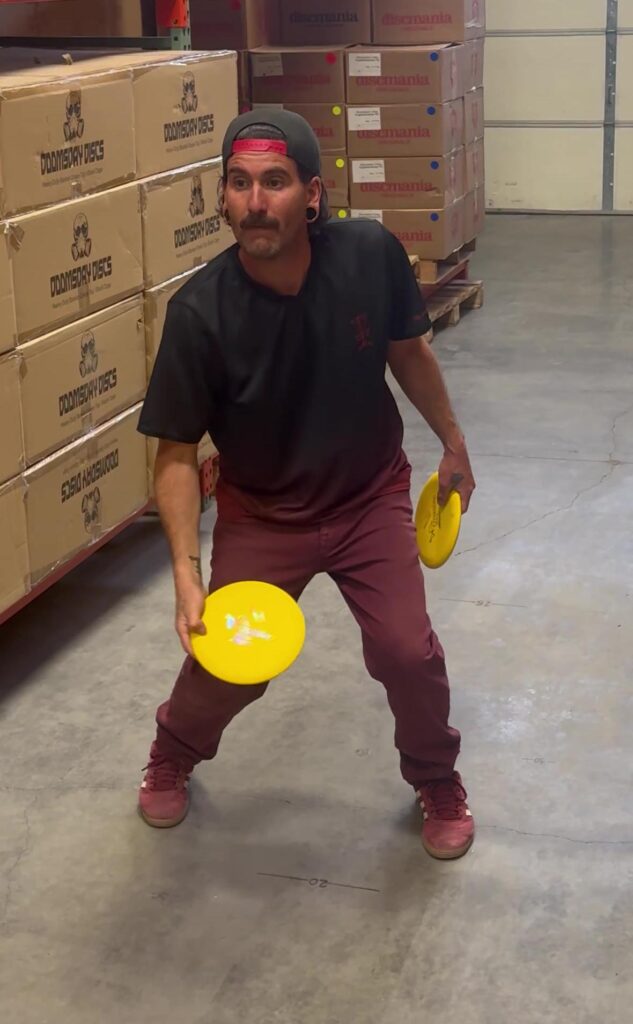
While some of us use the straddle when needed, others make it their go-to stance. Think Nate Sexton or Kevin Jones. By using it as your regular stance, you’ll be much more comfortable if you are forced to straddle around an obstacle.
The straddle is typically used with a push put, although a spin putt works as well. Facing the basket with your feet parallel to each other, you can get extra power by implementing a jump putt out of your straddle stance. Or just stay planted on the ground and get your power from your legs and arms.
STAGGER
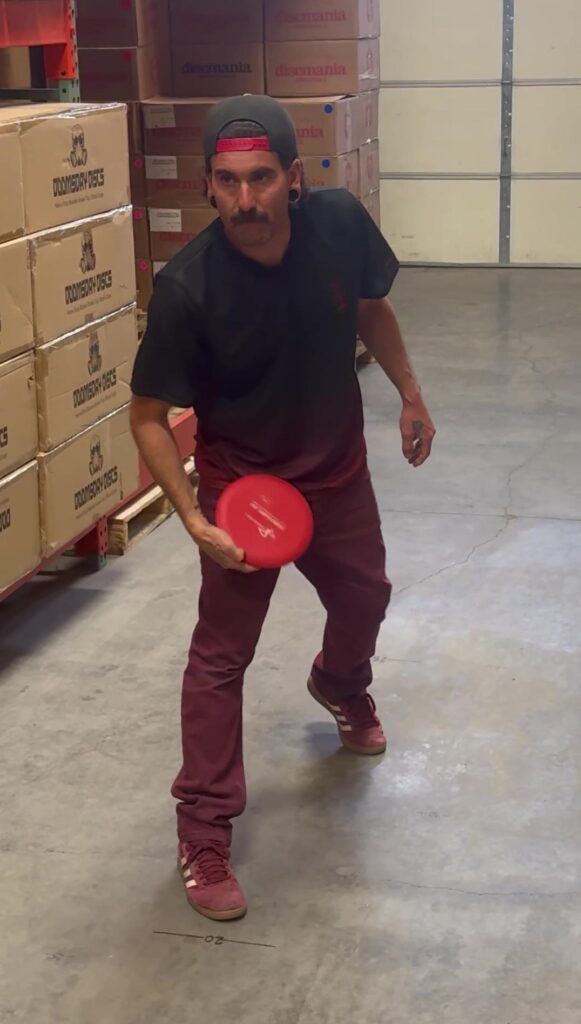
The stance that you see most people putt from is the stagger stance. Although there are a lot of moving parts to a stagger stance, it can generate a lot of power. It is an athletic stance that allows you to get power from your legs, hips, shoulders, arms and wrists. You can use your back leg to push off and counterbalance your body.
The stagger stance is executed by placing one foot in front of the other, with the lead foot the same as your dominant hand (right foot for right-handed players). Most of your weight is on your back foot to start, then the weight is transferred to your front as you release. Your back leg then rises into the air to counterbalance your body, giving you more distance. If you want to see a gymnast try this technique and get the highest back-leg kick of anyone, check out a video with Jennifer Allen!
SPIN
Although both the spin and push putts each include some spinning and some pushing, the difference is the emphasis. In the case of the spin putt, the emphasis is to create a lot of spin on your disc. This is accomplished by bringing the disc near your body and snapping it toward the basket. That motion creates a lot of spin and is useful for many different disc golf scenarios.
When you use your elbow and wrist to create a lot of spin on your disc, it allows you to get longer distances from your putts. It also allows you to have a higher success rate in a windy situation by cutting through the wind. However, this putting technique also has some disadvantages.
Whenever you introduce additional moving parts into an equation, you have to rely on consistency among all of those parts. Any variations and your chances of a successful putt diminishes. That is the down side to spin putts. On the plus side, it can be used in either a straddle or stagger stance.
PUSH
The push putt has its emphasis on lofting the disc into the air with minimal spin. The disc floats to the basket with much less power. This softer approach means that missed putts won’t have as long of comeback putts. The arc of the putt can be useful in getting over obstacles. Plus, they are also less likely to spit out or bounce out since they don’t have as much speed.
That lack of speed can also be a downside, since you can’t get as much distance. Another disadvantage is that in windy conditions, the push putt can be difficult to properly execute, since your disc will be affected by the wind.
Summary
No matter your desired putting technique, the bottom line is to practice it enough to be effective. If you aren’t confident with your technique, it doesn’t really matter how you stand nor how you putt. Whichever style fits your game, get good at it through repetition. I also recommend spending a few minutes each putting session trying out other techniques, in case you have to use one of them out of necessity.
Get out hucking and throw what you love!
